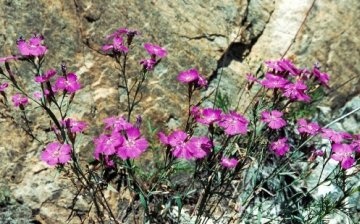Royal carnation (field)
As you know, there are many varieties of carnations. For example, the field carnation, due to its properties, was popularly called by the people by several names: uterine carnation, "wild soap", meadow carnation.
We will talk about its properties a little later, but for now we will consider its characteristics. The field carnation reaches 40 cm in height, has a thick root system, knobby stems and a five-leafed flower, its fruit is a capsule. As a rule, field carnation grows in the eastern European part of Russia and in Siberia. The plant is designed in such a way that the slightest short-term rain can provide a sufficient amount of moisture.
The medicinal properties of field cloves have been known for many millennia, although the chemical composition of the herb has not been fully understood. First of all, cloves were used in the fight against the plague, another miraculous property is the ability of the root system to wash, hence the name "wild soap".
The field carnation is called the uterine carnation due to its miraculous effects in obstetrics and gynecology. She copes well with internal bleeding and has anti-inflammatory, diuretic effects. In Central Asia, field cloves are used after animal bites with rabies.
Also, this clove is used for cardiovascular diseases as a sedative: with severe heart failure, with nervousness and severe excitability, etc.
For decoctions and tinctures, flowers, leaves and stems are used, which must be collected in the months of June and July.



